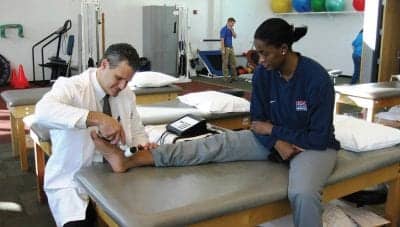Traces of bacteria associated with gum disease were found in samples collected from rheumatoid arthritis patients.
Rice University computational biologist Vicky Yao found traces of bacteria associated with periodontal disease in samples collected from rheumatoid arthritis patients.
Her finding helped spark a series of experiments that confirmed a connection between arthritis flare-ups and periodontitis. The study is published in Science Translational Medicine.
Tracing this connection between the two conditions could help develop therapies for rheumatoid arthritis, an autoimmune inflammatory disease that attacks the lining of the joints and can cause heart, lung, and eye problems. The approach that led to the study could prove fruitful in other disease contexts, such as cancer.
“Data gathered in experiments from living organisms or cells or tissue grown in petri dishes is really important to confirm hypotheses, but, at the same time, this data perhaps holds more information than we are immediately able to derive from it,” said Yao.
Yao’s hunch was confirmed when she took a deeper look into data collected from rheumatoid arthritis patients by Dana Orange, an associate professor of clinical investigation and a rheumatologist, and Bob Darnell, a professor and attending physician at Rockefeller University and the Howard Hughes Medical Institute.
She found that the germs in the samples that changed consistently across patients before flares were primarily ones associated with gum disease.
“I was curious about this tool that allowed you to detect microbes in human samples. It was sort of like, for free, you’re getting an extra perspective on the data,” said Yao. “At the time, I hadn’t worked much on microbial data. Since then, Dana leveraged all this expertise and got together with people studying these bacteria.”
Yao’s focus since joining Rice in 2019 has shifted to cancer research. The discovery of meaningful information in data that would usually be ignored or discarded inspired Yao to take a similar approach in looking at data from cancer patients.
“The hope here is that if we find some interesting microbial or viral signatures that are associated with cancer, we can then identify productive experimental directions to pursue,” said Yao. “For instance, if having a tumor creates this hotbed of specific microbes that we recognize, then we can maybe use that knowledge as a means to diagnose cancer sooner or in a less invasive or costly way. Or, if you have microbes that have a very strong association with survival rates, that can help with prognosis. And if experiments confirm a causal link between a specific virus or bacteria and a type of cancer, then that could be useful for therapeutics.”
One of the better-known examples of a pathogen associated with cancer is the human papillomavirus (HPV). She used this well-documented connection to verify her approach.
“When we did the same exercise looking at cervical cancer tumor samples, we consistently detected the virus,” she said. “It’s a nice proof-of-principle finding that the presence of specific pathogens can be meaningful for certain types of cancer.”
Photo 60116477 © Hriana | Dreamstime.com





